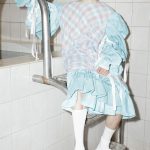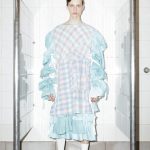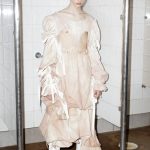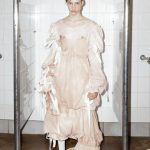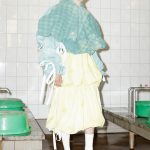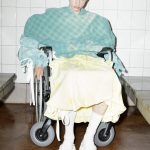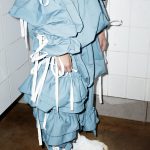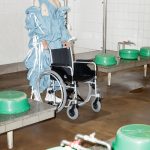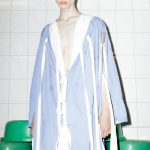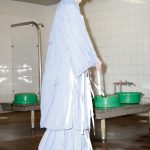Edvard Hiietam
- Faculty of Design
- Fashion Design
- ba
- Emperors of Solitude
- Tutor(s): Piret Puppart
A room filled with reflections of pastel colours, opposing feelings, fear of the dark corridors and stairs, is endlessly long. Confusion.
Your breathing is calm. Bed, where you are forced to lay on, is hit by the warm but terrifying light entering from the window. In need of a caress.
This place is neutral. How to exist? High ceilings, yet no ending in sight. Is this the time for self-reflection experienced through the eyes of a bystander?
Everything is paused from the daily existence as if being quarantined. Still, there is a feeling of healing in sight. The softness is what comforts you through difficult moments.
Photographer: Kertin Vasser
MUA: Mari-Ly Kapp
Model: Alan Solonchuk (SAGE Management)
Imagine big and airy forms that favor a state of isolation passing by on a verge of a world between something now and then. The noble silhouettes, that have lost their sense, and fabrics, which are decorated by ambiguous embroidery. Lifeline rhythm. Elongated bodies stroll with an aristocratic pace over the squared tiles towards freedom by stepping through the grid of obstacles. A majestic moment.
Is it not a smooth transition through the hindering space towards something new and fresh, where space for breath can once again be spotted after being cleansed from the poison?
I gathered inspiration from the local hospitals and environment. Gigantic buildings, large lobbies, service staff and …solitude, that takes over. I was fascinated by the materials which are used in medical life.
In medicine there is a huge usage of disposable accessories, which are harmful to the environment or washing cycles that are way too intense because of clinical requirements. Average stay per patient in the hospital is about 1 to 3 days, which means that one set of bedsheets can end up being washed up to 200 times per year. Most clothes do not withstand it either, which are torn or worn out from certain places, that creates a big amount of residual materials compared to bedsheets.
This problem is being contributed by a drop in materials quality, that were previously made in Estonia, but now are being produced in third world countries.
Therefore, I have decided to contribute and gather as many “amortized” materials as possible from the hospital facilities. This is so to say, document a self-renewable resource, which finds new life through fabric manipulation and creates a basis to the collection.
